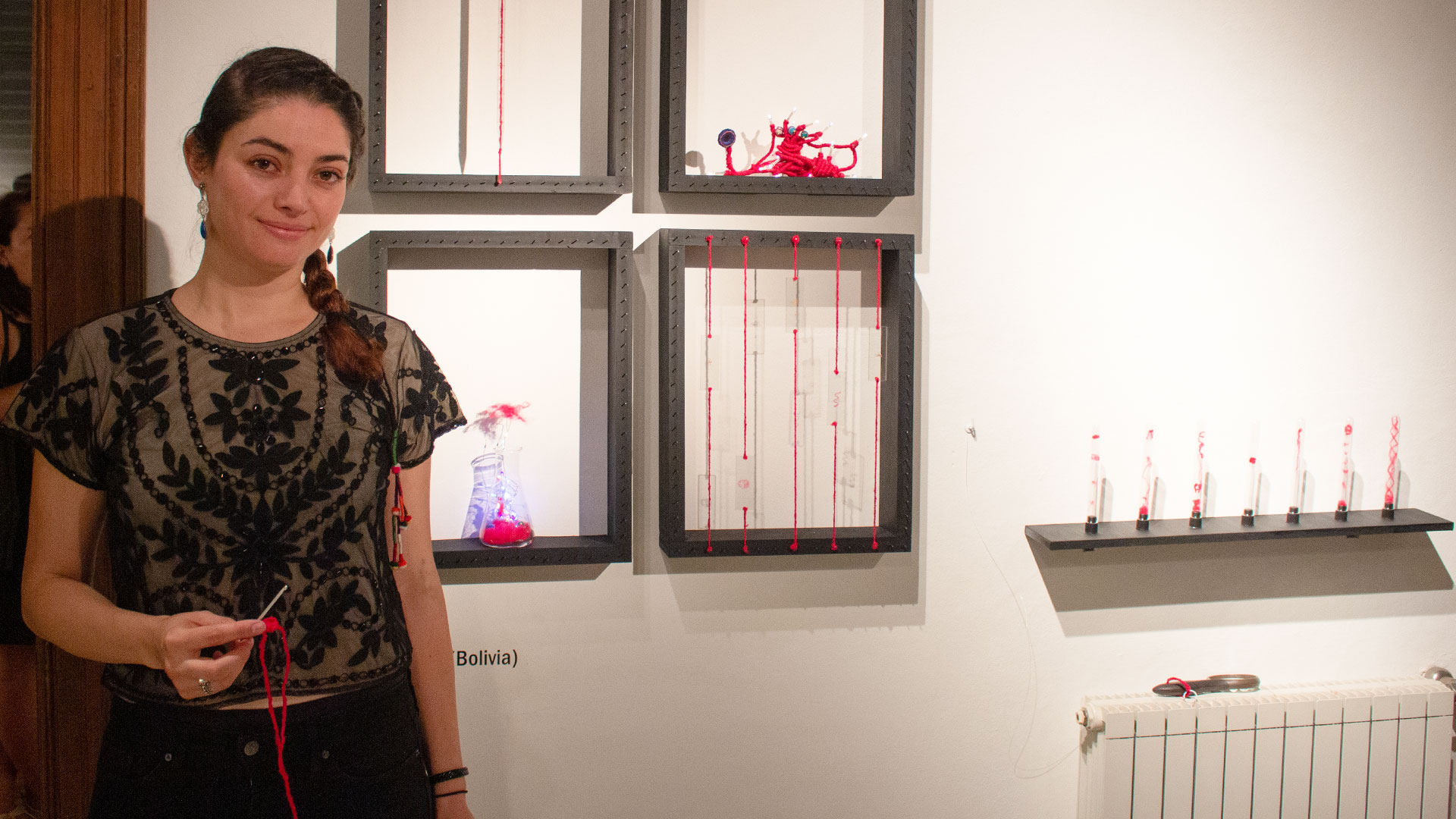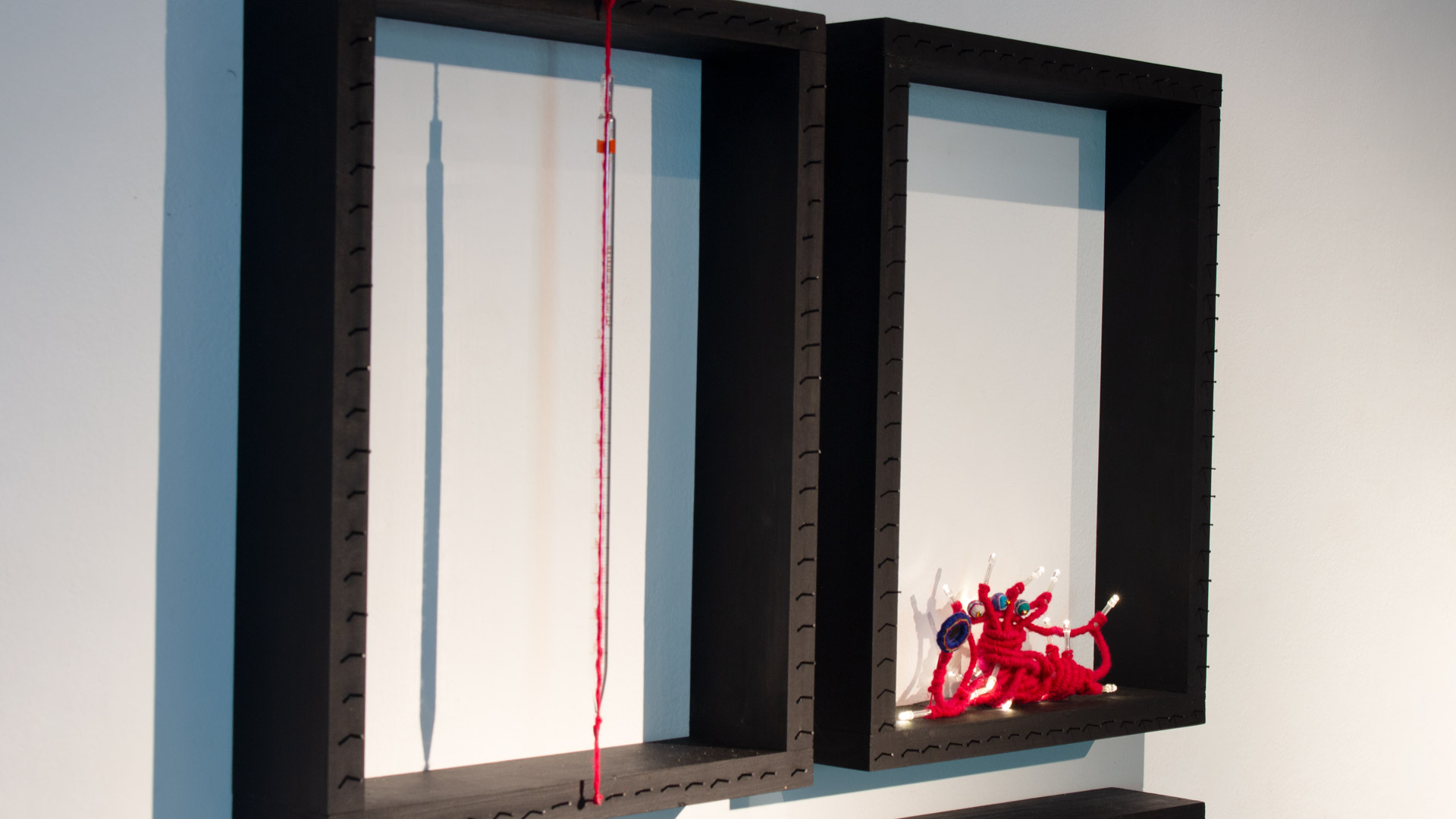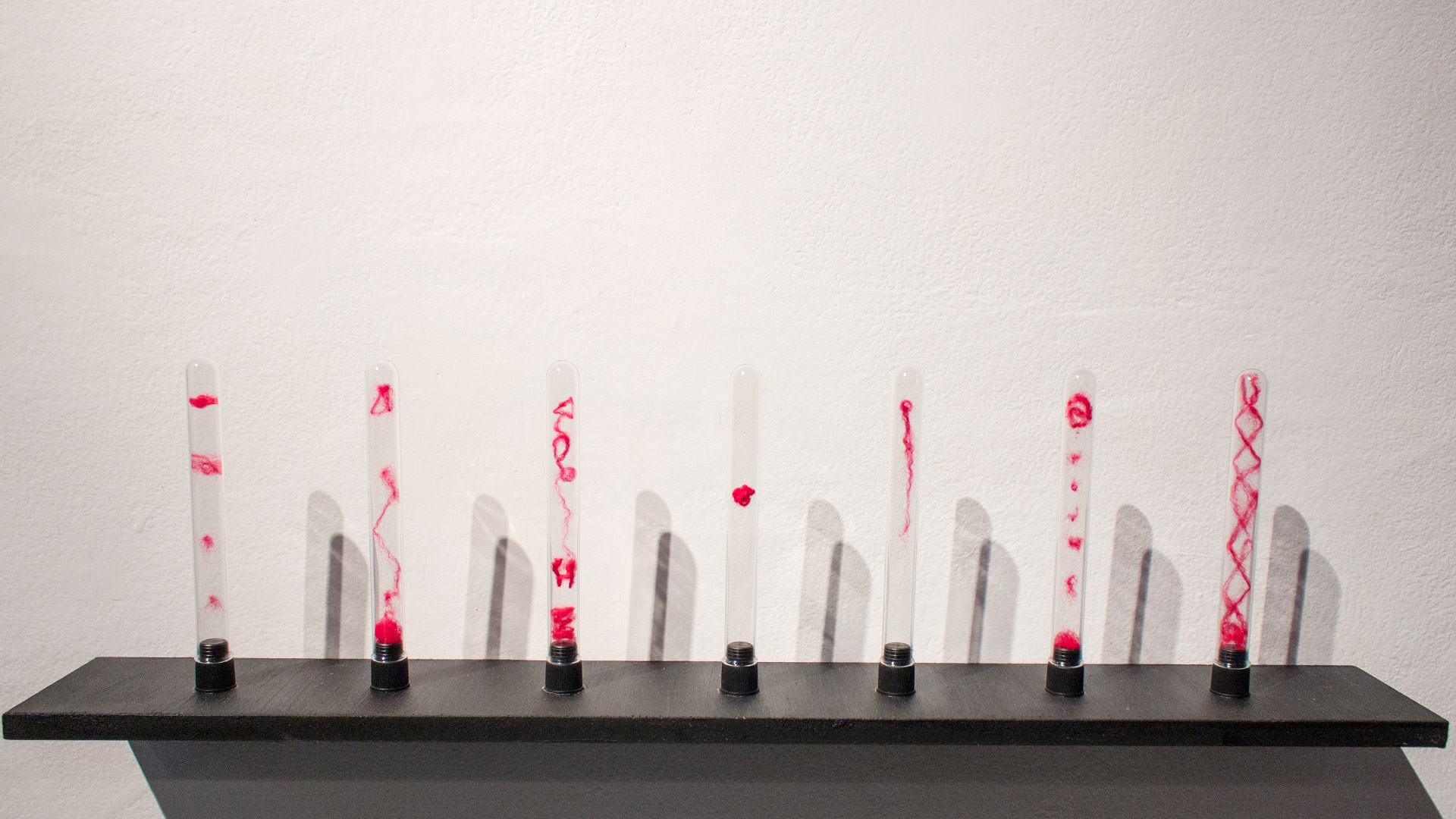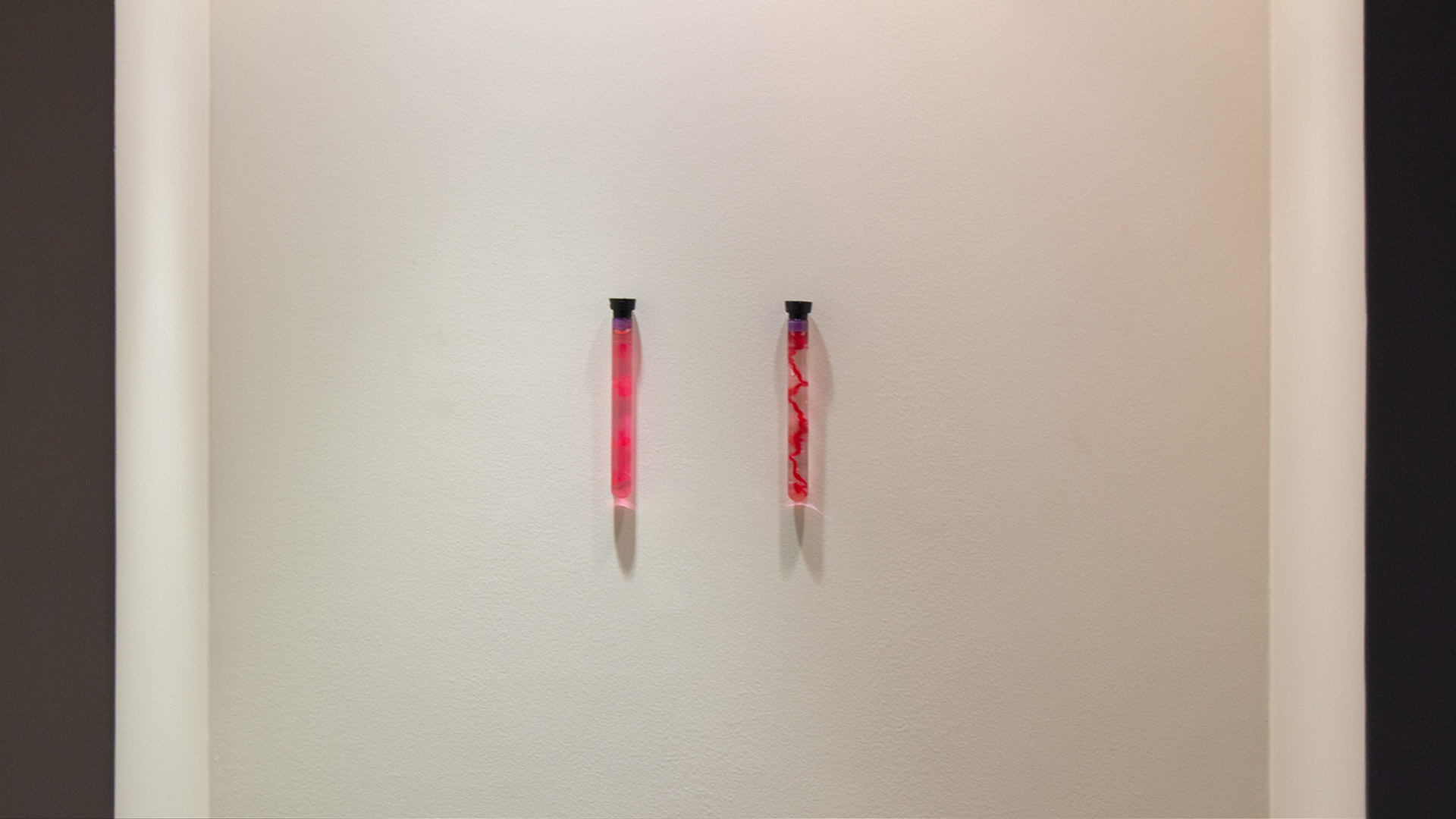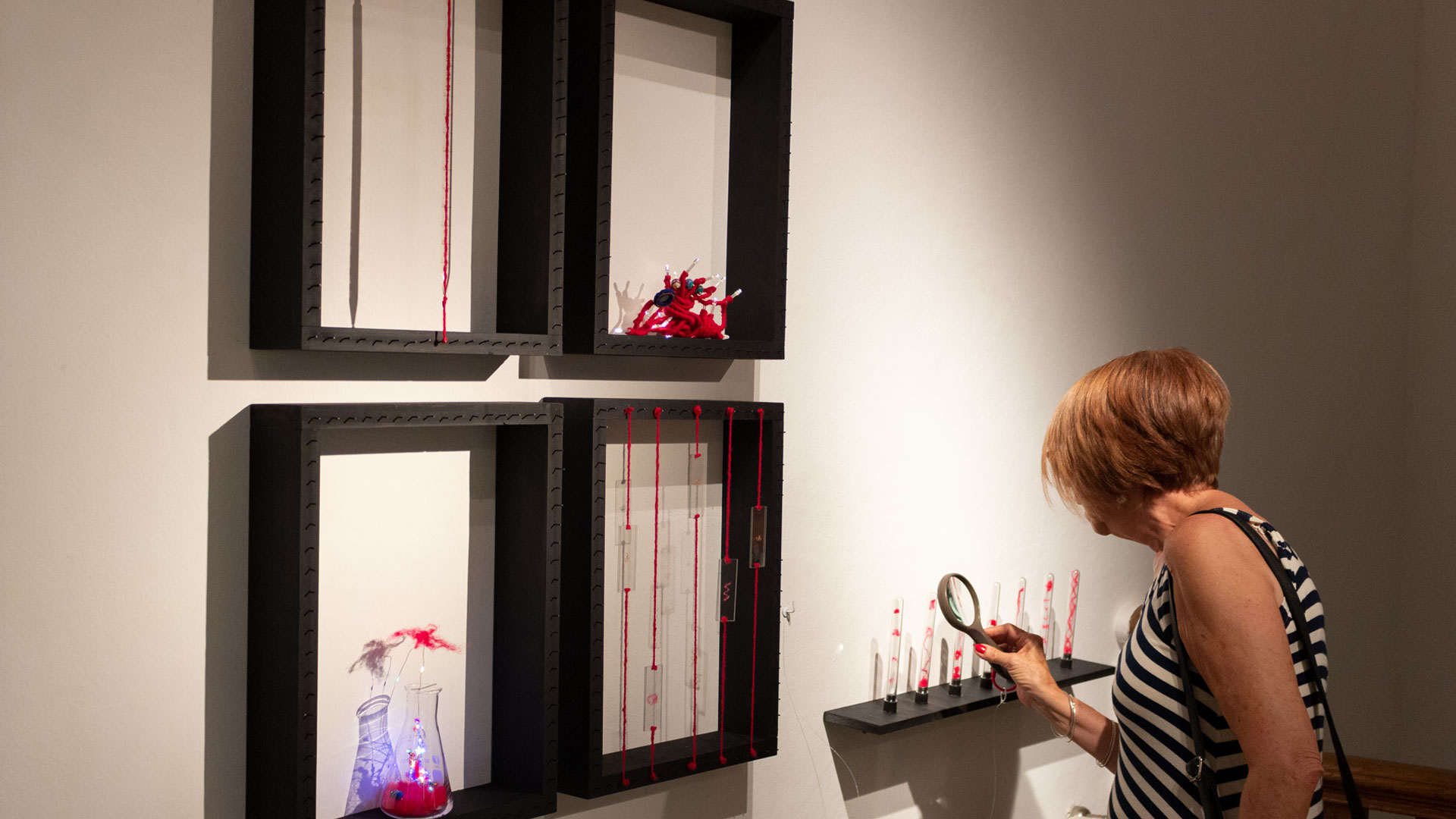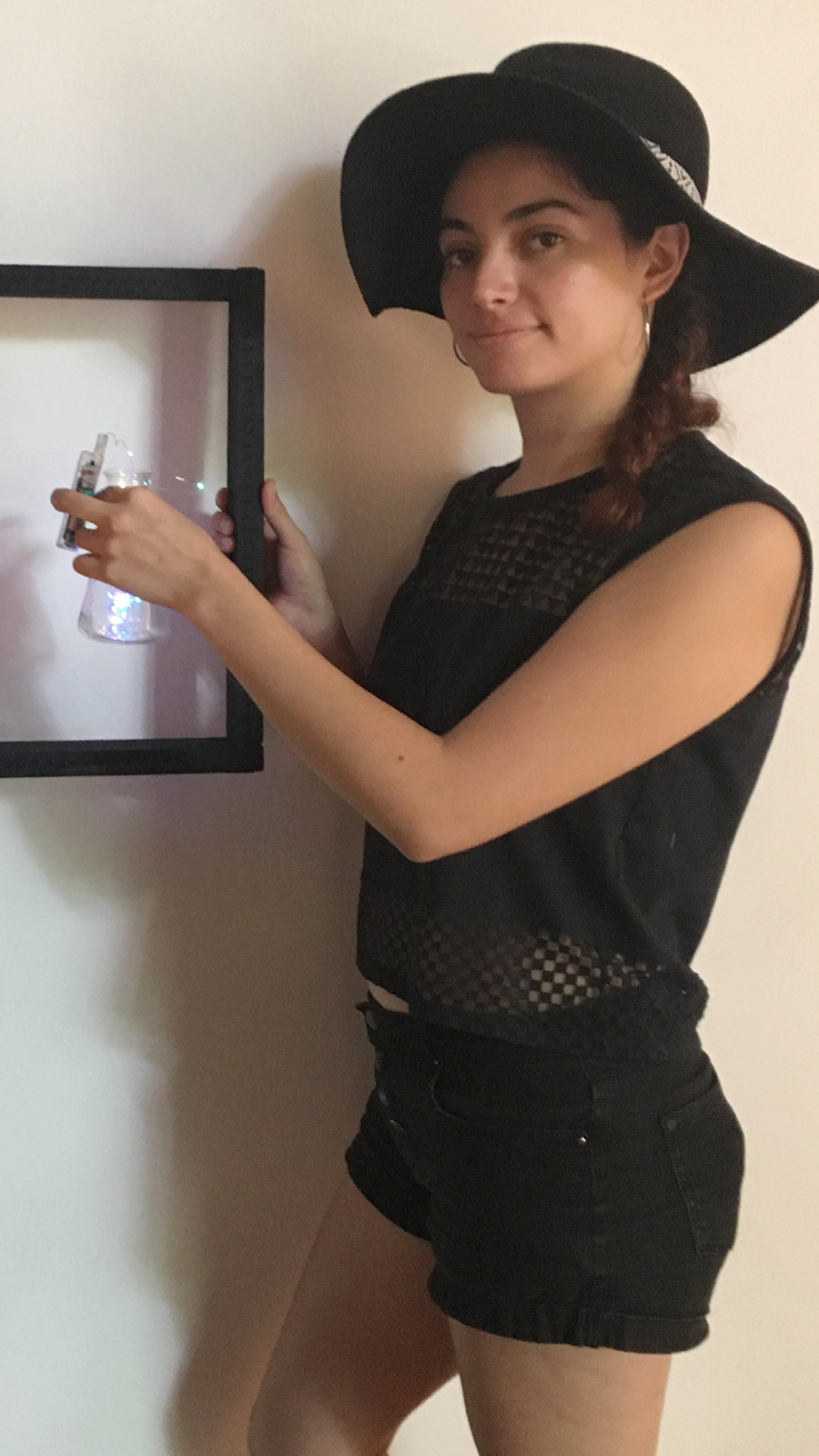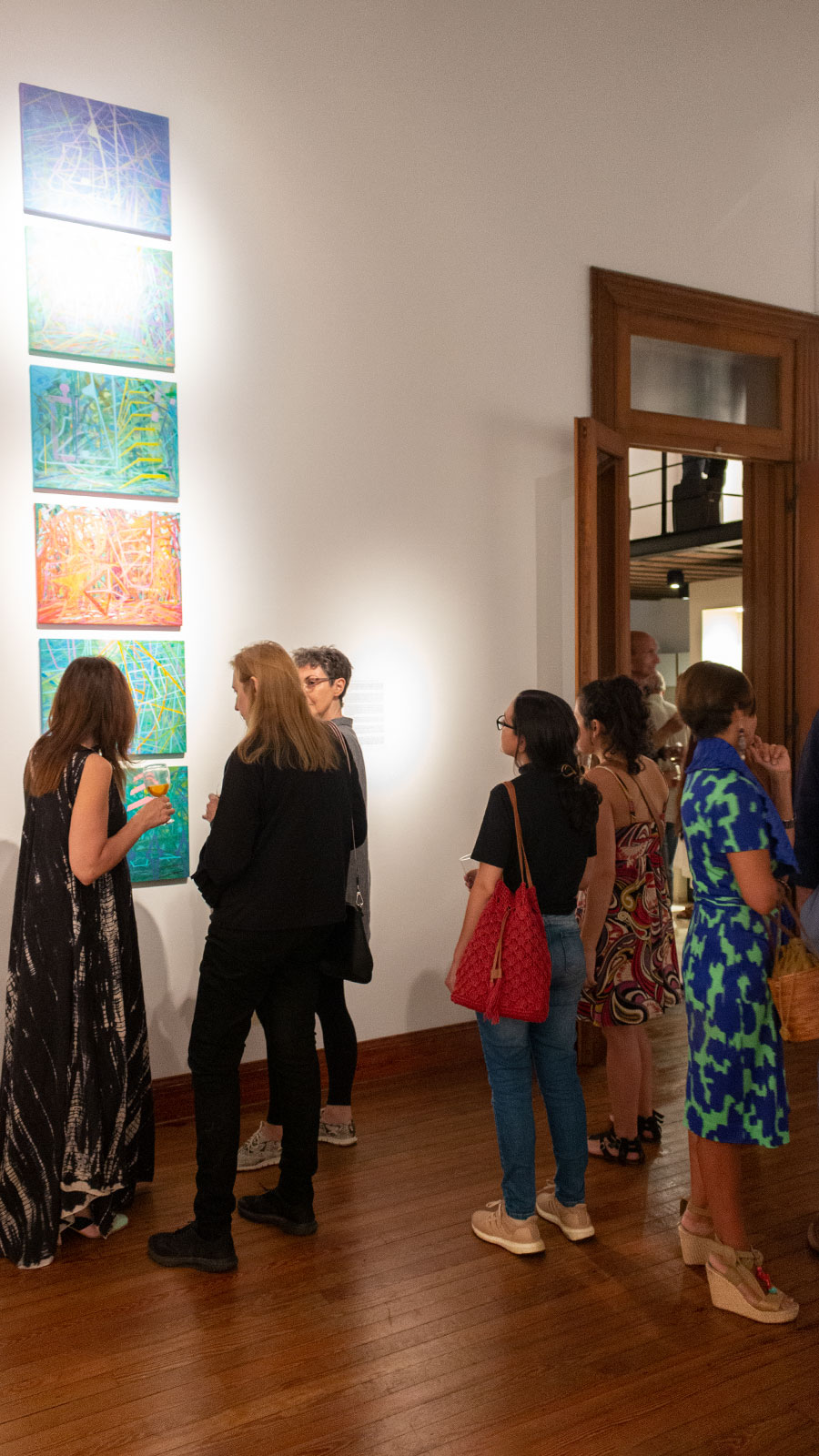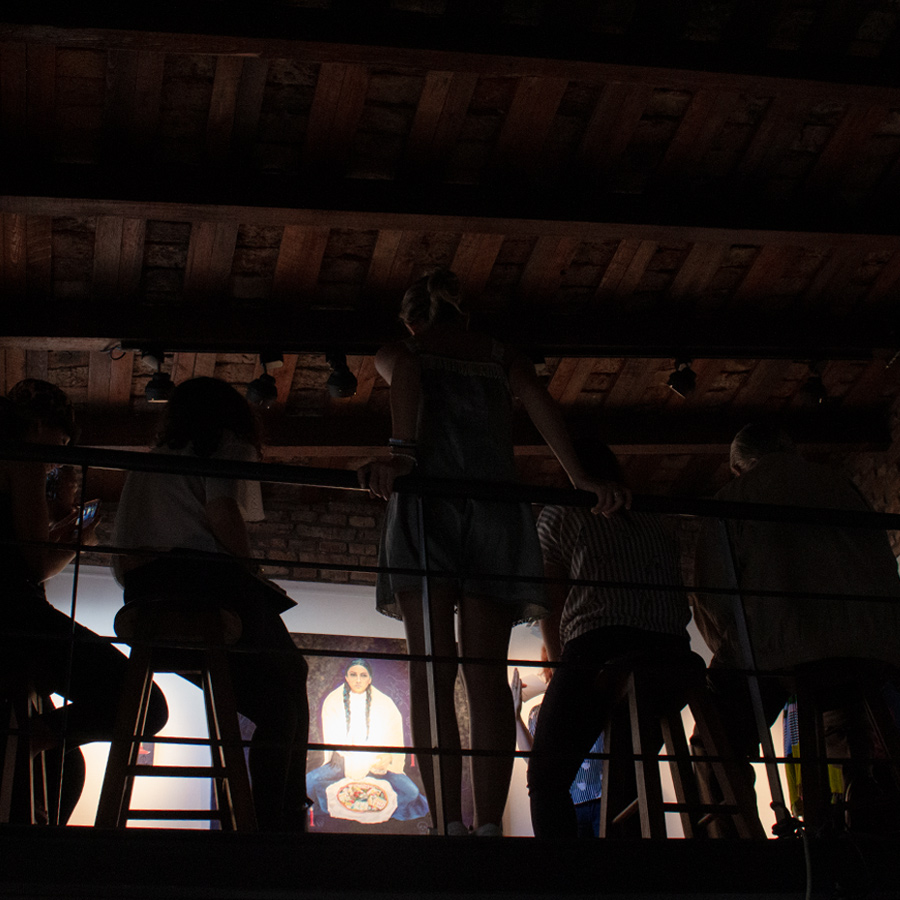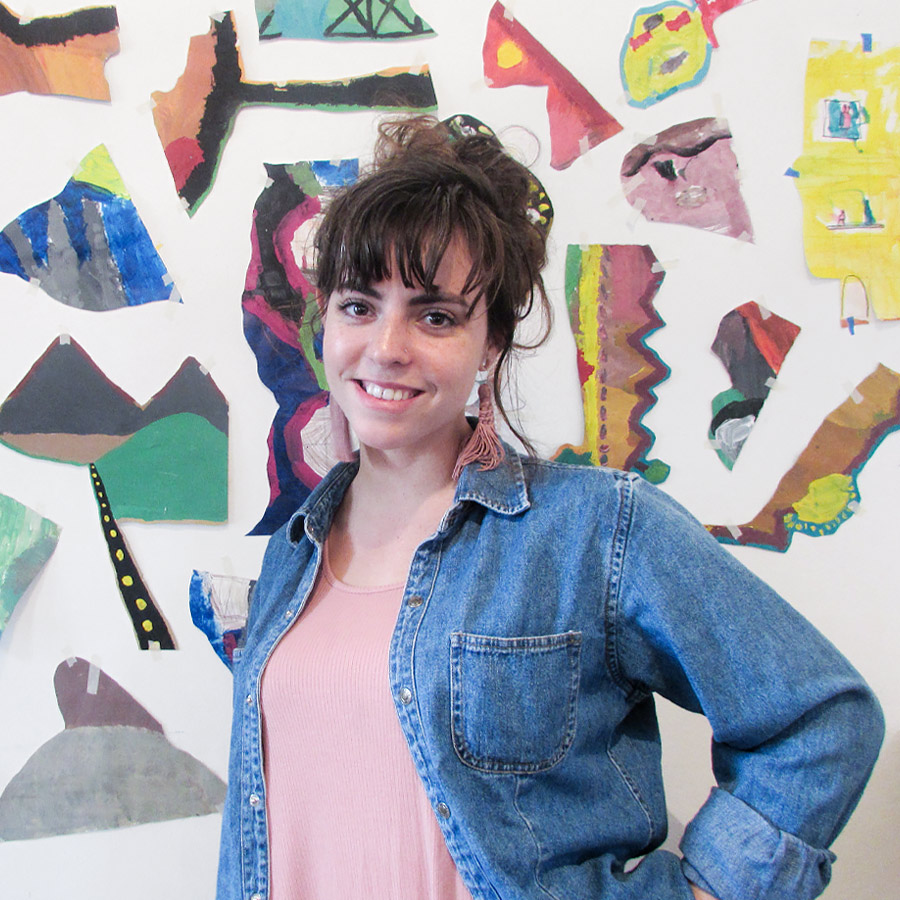Activities
Exhibitions
Khurusarium Vol. 1
Daniela Elias Guillén
19.02.20 06.03.20
Khurusarium, (Volumen 1) –By Alicia Candiani
As of 2009, the Plurinational State of Bolivia recognizes as free, sovereign and independent nations 36 cultures that exist in its territory since before the colony, each with its worldview, hierarchical structures and different socio-economic forms of organization. For four thousand years, weave has been one of the most complex and developed aesthetic expressions of the Andean space, reaching the level of true languages through which the people drew their identities and built their differences. It is then possible to say that Andean textiles can be “read”; as texts that speak of certain thoughts or particular visions of their worlds. Connoisseur of these cultures and their cosmogony, the Bolivian artist Daniela Elias Guillén has worked during her residence in ´ace in a contemporary articulation of the worldview that the Jalq´a culture expresses through her textile art.
The landscape of the Jalq’a weave is that of the Ukhu Pacha (the magical underworld), a sacred space that is described as a world that is not perceived or seen directly and that is not governed by the laws of society, nor even of nature known to man. It is a dark place, it is the world of a deity of the depths and of the separated spaces (the saxra), remote places and of weak light. The Jalq’a have selected the saxra world as a definition of their identity. In it there is no relative order of things, because there is no gravity, but chaos. The designs of these textiles use colors that absorb the light in great magnitude, contributing to the sense of darkness and confusion and forming continuous spaces where the figure and the background merge without a viewing angle or horizon line to fix the eyes. The Ukhu Pacha is a messy and chaotic space (but with an internal order); A world of darkness, death, dreams, fear and multiplication. This entropic space is inhabited by strange figures that are called khurus (worms), mythical and naughty creatures that look like little anthropomorphic and zoomorphic demons. In their weightless world there is no relative order of things, the khurus can float everywhere and the notion of above and below does not exist. The women of the Jalq’a culture reveal the Ukhu Pacha through their textiles. While the khurus can float anywhere, women must catch them in the warp, and in that way ensure that these naughty demons do not distract the people in this world. In some communities, women are only allowed to use red and black wool. Through this economy of elements they plot the warp of a world that is not terrible nor sordid, but rather shows and invites the fruitful freedom of the ungovernable.
Fortunately, the Jalq’a culture was poorly influenced by Weestern concepts. Their textiles transmit, in an encrypted language, a feeling of being in a space and time evoking a mystical freedom. Its integrative, decolonized and flexible ideas, its concept of self-reproduction and reproduction without the need for a division of binary genders, as well as a space where there are no hierarchies of classes or sexes, makes us reflect on the wisdom of this ancestral culture. For the artist, these concepts and the triple belonging of these beings (the underworld, when they are caught in the textile and when they are released) are fascinating elements when it comes to elucidating answers to difficult questions, drawing parallels between contemporary issues that have to do with science and biology, stem cells, in vitro reproduction, freedom in the acceptance of diversity, the entropic and the unpredictable. Concepts sometimes seen as quarrel to Western and Christian thought.
The research to these questions during her residence in ‘ace, opened the doors for an investigation that will take place in several volumes. In Khurusaurio: Volume 1, the artist “unravels / releases / catches” the khurus in the frames to warp, using traditional hand-spun wool and limiting her palette to red and black. In this case, the khurus have not been trapped in the warp but in laboratory elements: test tubes, pipettes, an Elenmeyer flask … Without losing their festive and playful nature, they curl, illuminate and invade the space. By their presence, they succeed in showing us that weightless, free and timeless world where human beings live with their demons who thanks to women, they are able to dominate and hold.
Related artists
